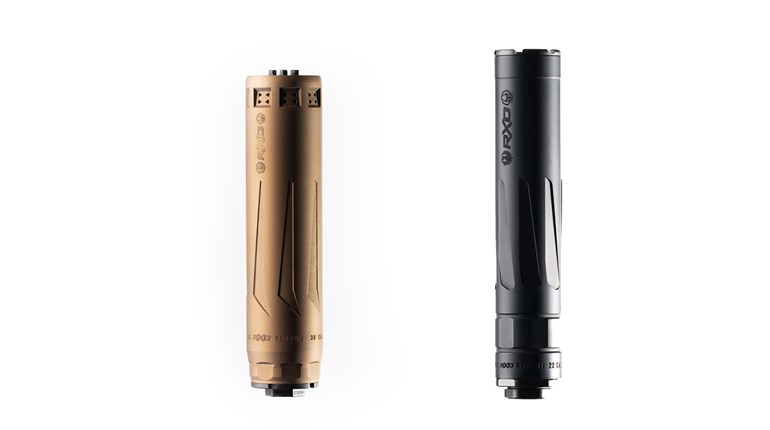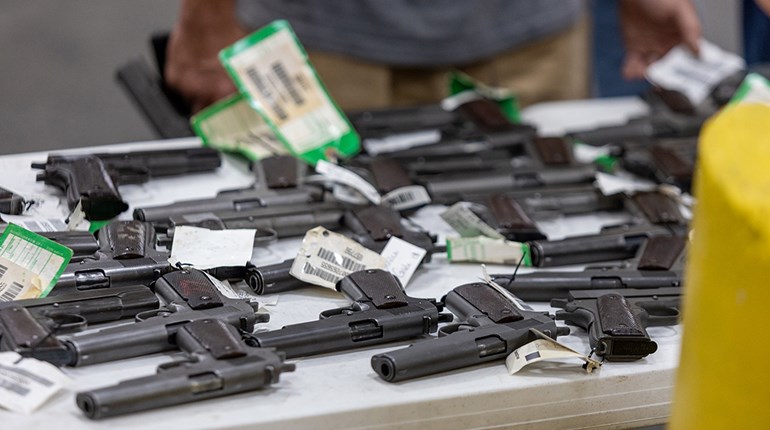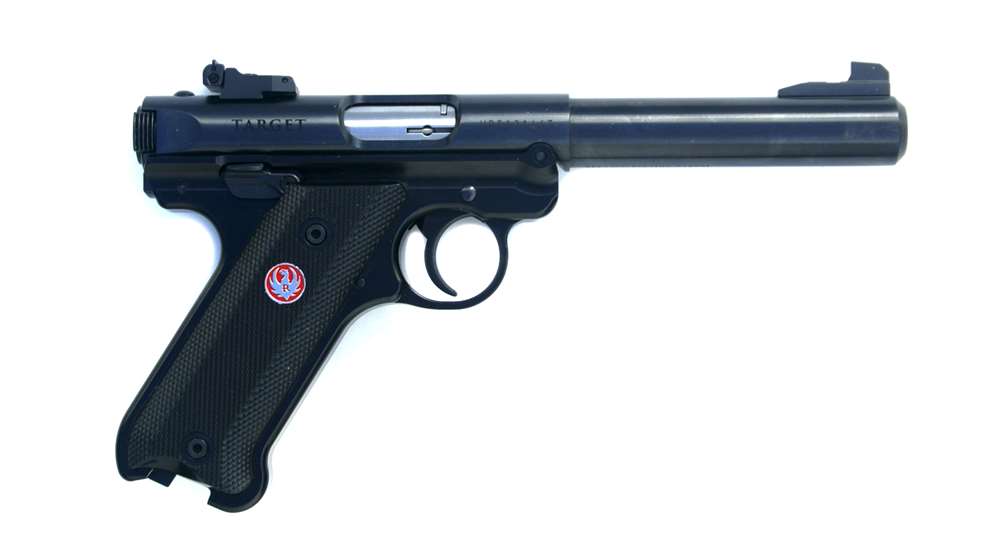
Above: The new Ruger MK IV features the same frame and handling as previous models, but with ambidextrous safeties and a new bolt release lever.
In 1949, William Batterman (Bill) Ruger emerged from his garage with a handgun design that not only became an American icon, but launched one of the largest and most diverse firearms manufacturers in the country. His Ruger Standard Pistol (later renamed the MK I) was a .22LR semi-auto patterned after the graceful WWII-era Japanese Baby Nambu—including the enclosed bolt riding in a solid upper barrel/frame unit that produced a very consistent lock-up and excellent accuracy.
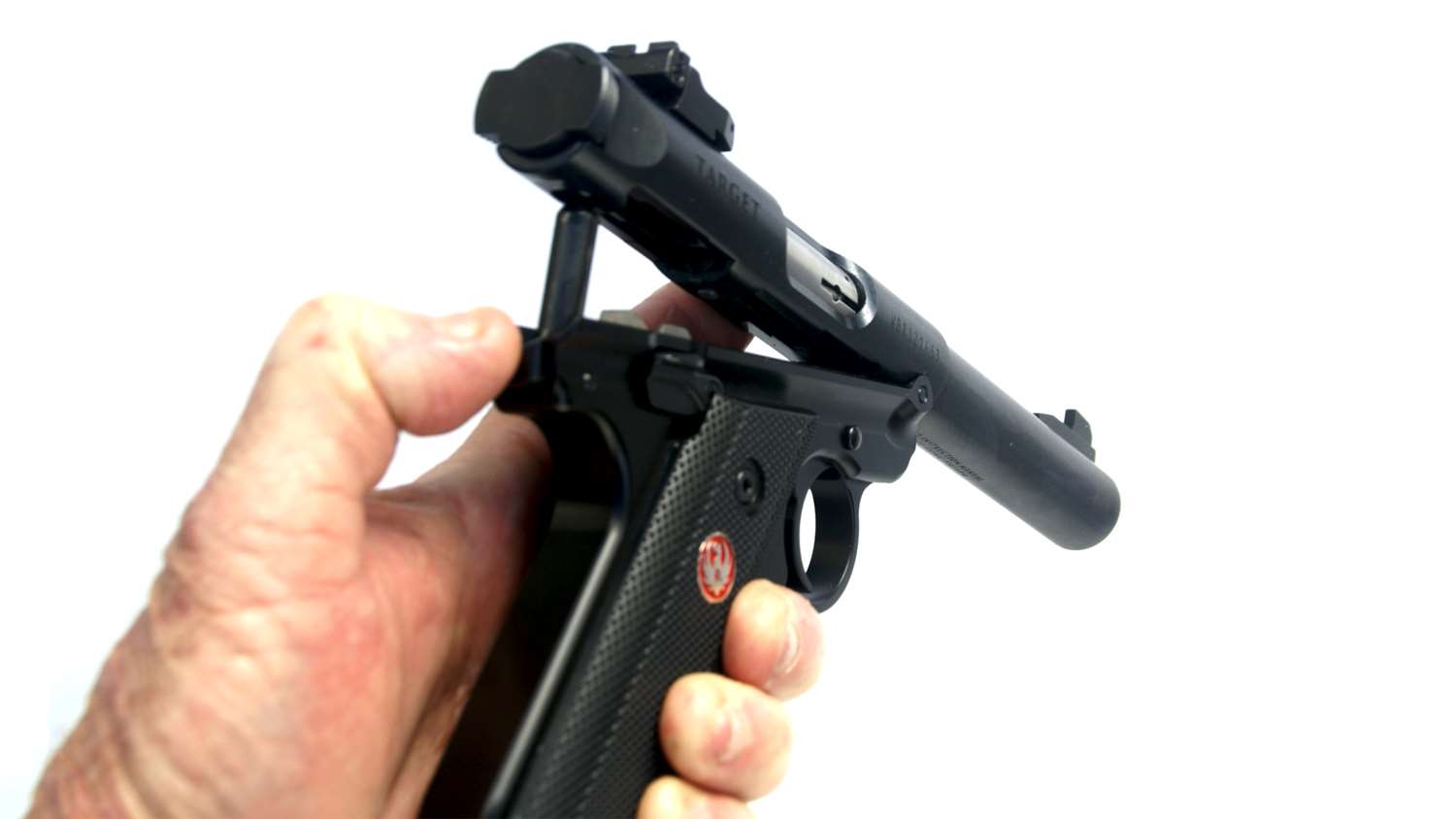
The elegant lines, modest price, and tack driving accuracy made it an instant hit with shooters and it became the most popular plinking and target rimfire pistol in the country. It stayed in production until 1981. In 1982, the Ruger MK II replaced it; offering the modest price and similar features but in a more diverse line of models to better suit the needs of competitive shooters. In 2005, it was replaced by the MK III series. The changes in the MK III were the addition of a magazine safety; moving the magazine release from the heel of the butt to the preferred American-style 'behind the trigger guard' position; and the top of the receiver was now drilled and tapped to allow the easy mounting of the increasingly-popular optical sights.
None of these model changes altered the accuracy and handling of the original Standard Pistol. They merely provided more options for shooters. Unfortunately, they also failed to address the biggest drawback to the original design—field stripping for cleaning.
To be 'extremely charitable', field stripping the MK I, II, and III series guns was not quite as simple as many would have liked. A shooting buddy of mine summed it up well when he said “You need a degree in mechanical engineering, and it doesn't hurt to have a Voodoo Priest standing by to assist.”
I certainly concur. My experience with the MK I, and my current MK II, goes back over 30 years and I never truly mastered the take down. In fact, the last time my MK II was field stripped was a decade ago. That resulted in my arriving at my local gunsmith with the proverbial 'paper bag full of parts', a sheepish grin, and my wallet in hand.
That won't happen with the new MK IV.
The gun
Introduced in mid-2016, the MK IV retains the features of the MK III, but removes the sliding safety button on the left side of the frame and replaces it with ambidextrous thumb safeties, while adding a redesigned bolt release lever. The major change, however, is in the take down procedure. Advanced degrees and a Voodoo Priest are no longer needed!
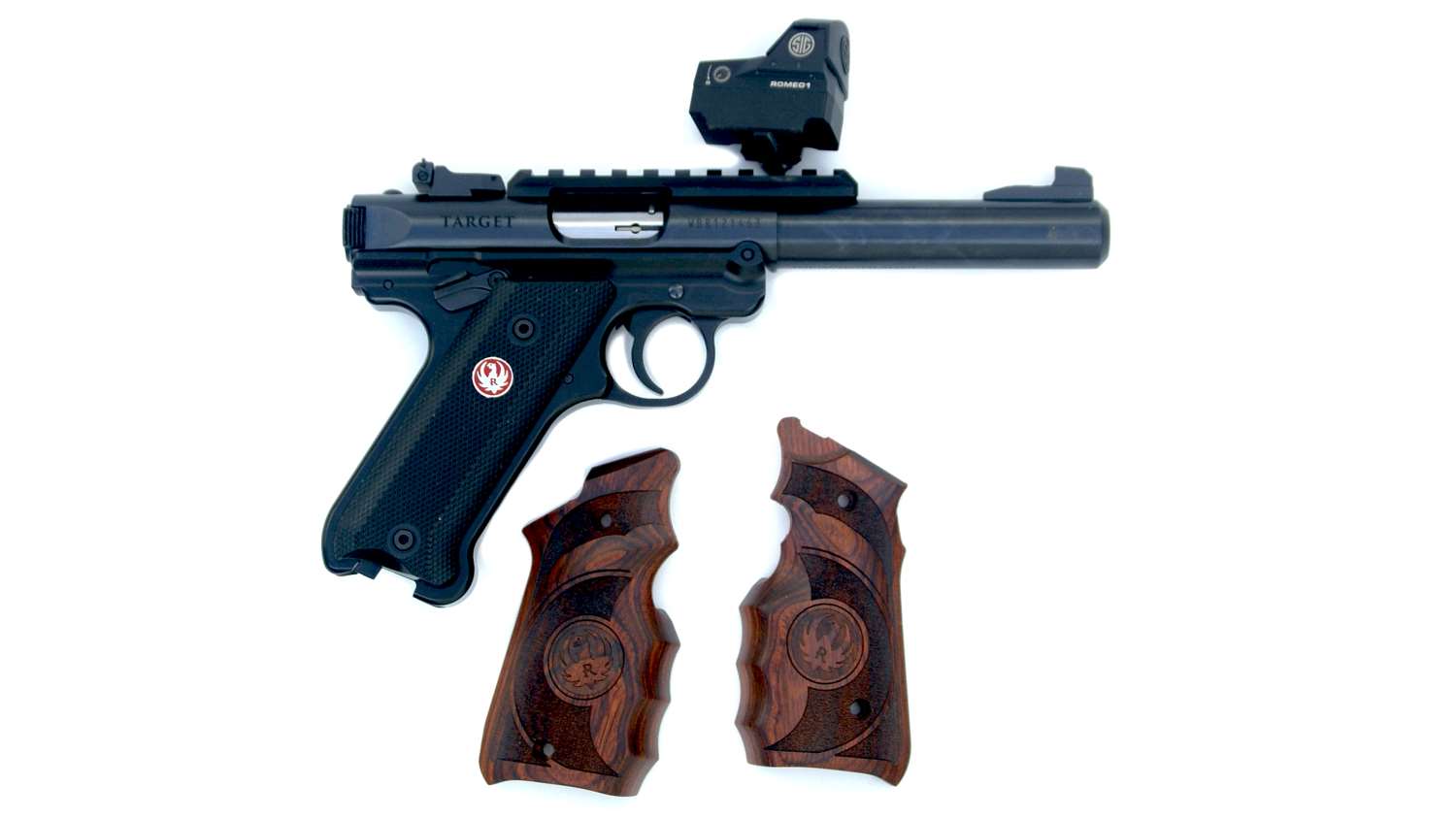
To field strip the MK IV, remove the magazine and cycle to bolt to clear the chamber and cock the gun. The hammer must be cocked to disassemble. Put the safety into the ON position. Grasp the barrel in one hand and the grip on the other. Depress the take down button below the bolt, tilt the barrel downward, and lift the upper unit off the frame. Slide the bolt out. Everything is now accessible and the barrel can now be cleaned from the chamber end instead of the muzzle.
To reassemble; leave the hammer cocked and the safety on, insert the bolt, slip the upper unit barrel notch onto the forward frame pivot cut out, tilt the upper unit back and align the bolt stop pin with its mating hole. Then press down on the rear of the barrel until it clicks into place. I can't think of another .22LR semi-auto pistol that is as quick and easy to field strip as the new MK IV. It is so simple that even I got it right on the first try!
The new MK IV series is currently available in three target models, two Hunter versions and the 22/45 Lite. I choose the alloy-frame target version (#40101, $529). It features Ruger's adjustable target sights, a 5.5-inch bull barrel with a 1:16 RH twist, blued finish, checkered black plastic grip panels, and weighs in at 35.6-ounces. The trigger pull measured a bit over 5 pounds on my Lyman gauge.
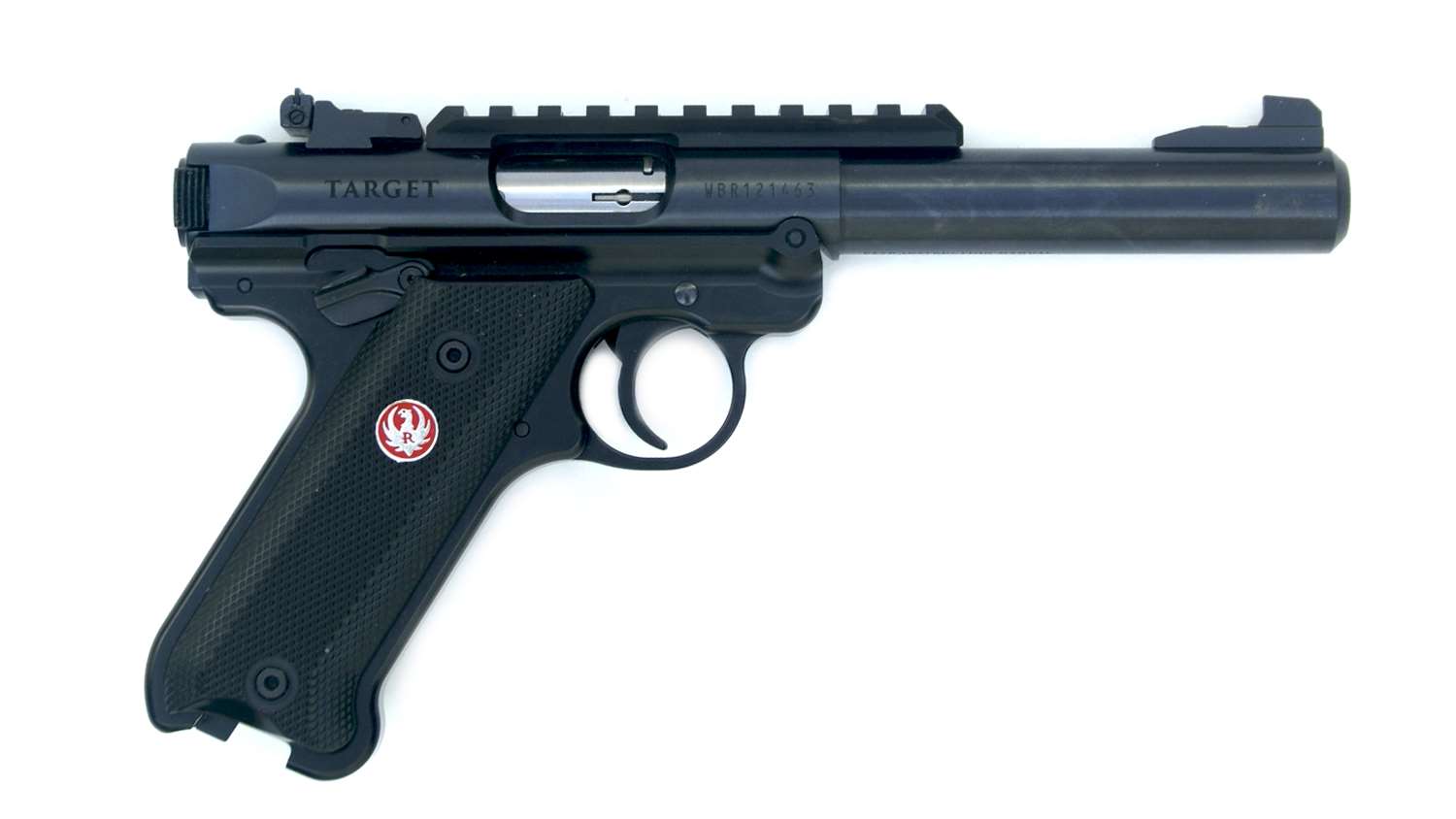
Accuracy testing is a part of any gun test and it's been a few years since my eyes would confidently allow me to wring maximum accuracy from iron sights, so Ruger's Picatinny Rail ($14.95) was ordered. I'm also not a big fan of the skinny Ruger factory grips. I assumed it would take a while for the grip makers to catch up to the new gun, but Ruger surprised me and already had a set of oversized target grips ready for the MK IV ($69.95). They came along as well.
The rail and grips slipped on easily. I was pleased to see that the rail sat low enough on the top of the receiver to allow the iron sights to be used when it was installed. That's a handy feature should the optical sight malfunction during a match, since the optic can be popped off quickly and the match finished with the irons.
On the range
The loads on hand included CCI's 40-grain Mini-Mag copper-plated RN and their Standard Velocity 40-grain lead load that my MK II loves. Three additional loads: Federal American Eagle 45-grain CPRN Suppressor, Federal Premium Gold Match 40-grain Match, and Aguila's 40-grain Pistol Match, were included. These are standard velocity loads that my MK II occasionally balks on (possibly due to not being thoroughly stripped and cleaned in a decade) and that I can't count on for match use. Given the erratic availability of .22LR rimfire ammo today you almost have to 'take what you can get', and the gun needs to shoot it reliably and accurately. I was hoping the MK IV would prove to be less finicky that my elderly MK II. As it turned out, I needn't have been concerned.
I started by zeroing the iron sights and trying the various loads. The MK IV ate every one of them without as much as a burp!
I had a SIG ROMEO1 reflex sight on a Picatinny mount on hand and that went on next. It was zeroed from a 25-yard bench rest and the positive elevation and windage adjustments made that a quick process. Bench rest accuracy tests followed, and a look at the below chart will show the new design did nothing to degrade Ruger's proven accuracy. Steel Challenge practice was next, followed by a six-stage 150-round match.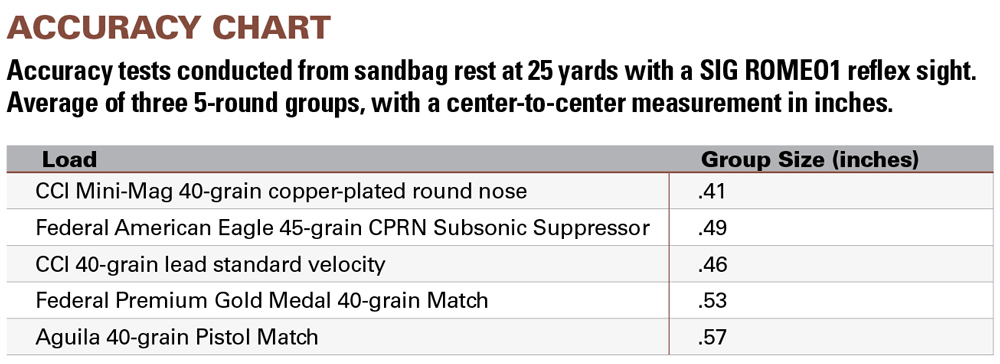
That put about 500 rounds through the gun, and I was still waiting for the first malfunction. Given the easy field stripping, excellent accuracy, and the reliability with various loads, my decision easy. It was time to retire my MK II and this was one test gun that wasn't going back after the test loan period. I sent them a check.
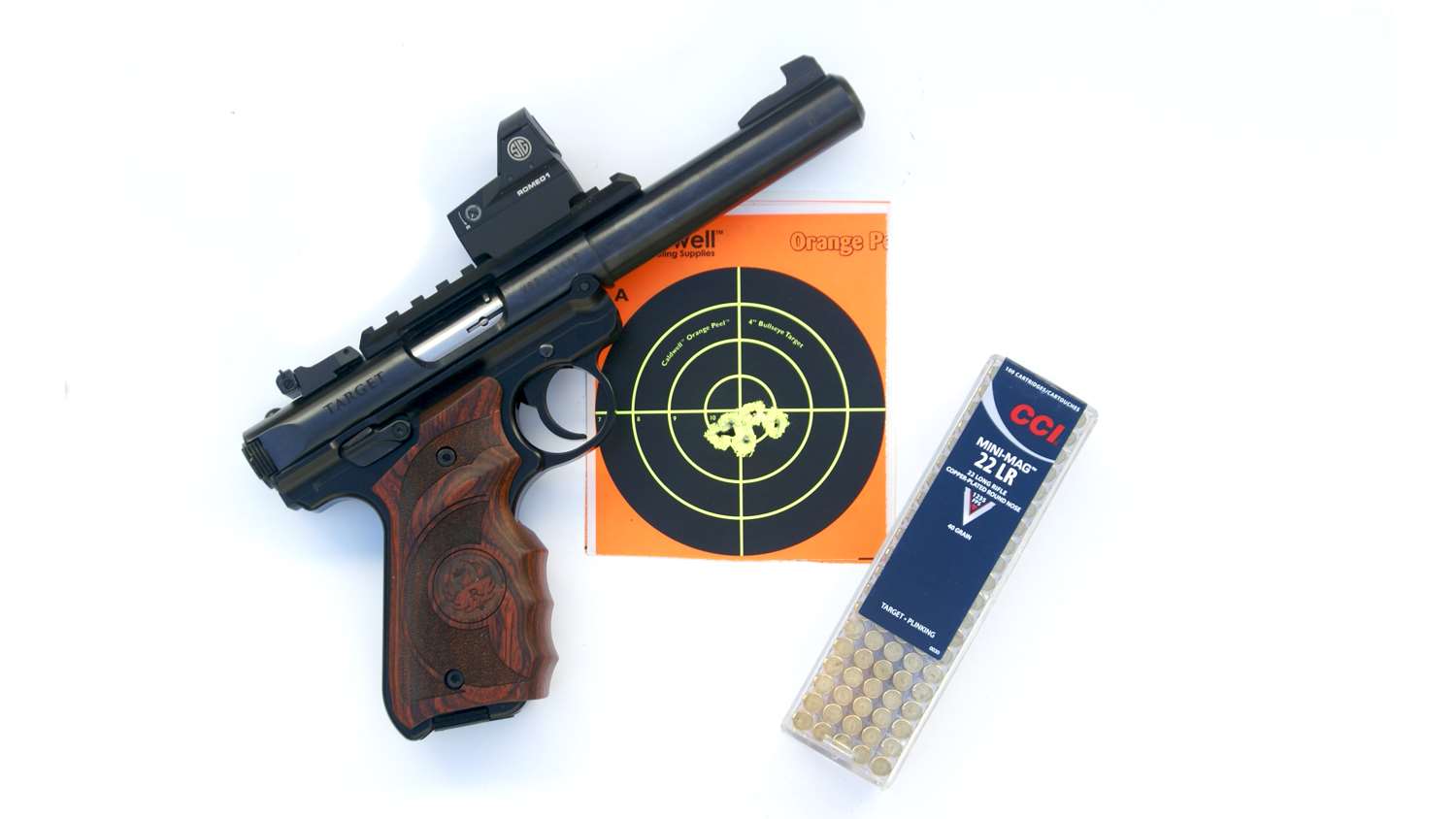
The only remaining concern was the 5-pound plus trigger. It wasn't an issue from a bench rest, but proved 'less than desirable' during my Steel Challenge match. For that I turned to Scott Volquartsen and his namesake company (volquartsen.com). They are America's premier Ruger smiths/parts suppliers, and even though the MK IV had only been out for a few months they already had their drop-in Accurizing Kit ($105) available for it. This is an adjustable match trigger that reduces the trigger pull to a crisp 2.5-pounds.
My MK II served me well for over 20 years, but there was no reluctance in retiring it. When I can replace it with a gun that tosses sub-half inch groups at 25 yards, eats any load I feed it, has a 2.5-pound trigger, and strips for cleaning in mere seconds—what's not to love!
Bill Ruger would be proud of the new MK IV.














